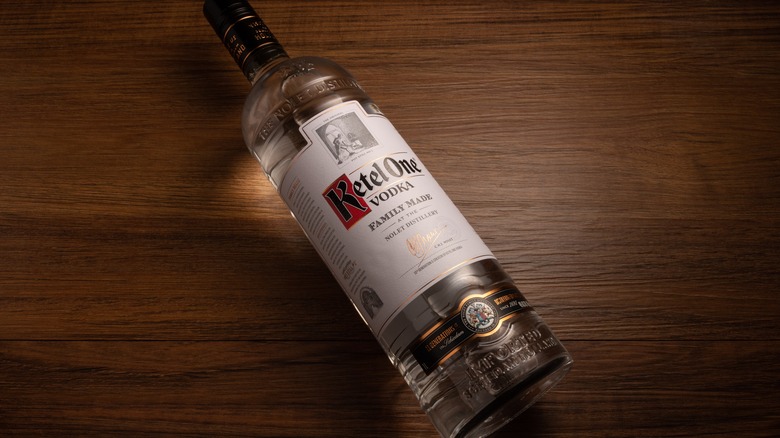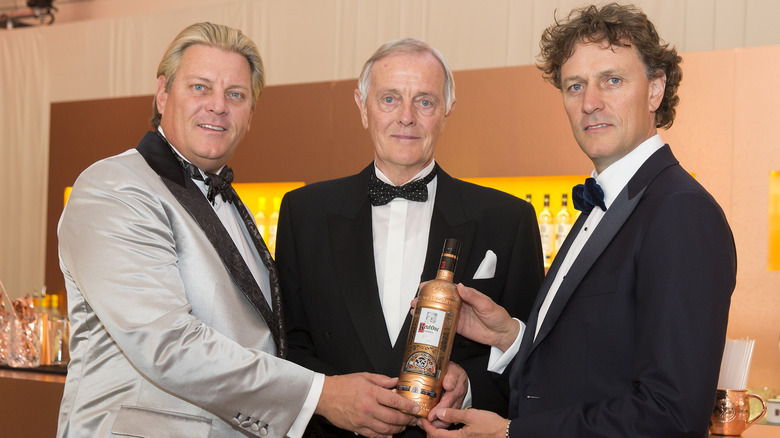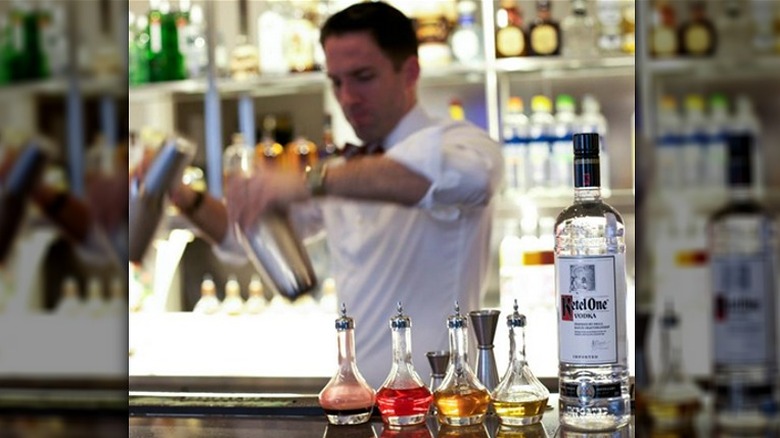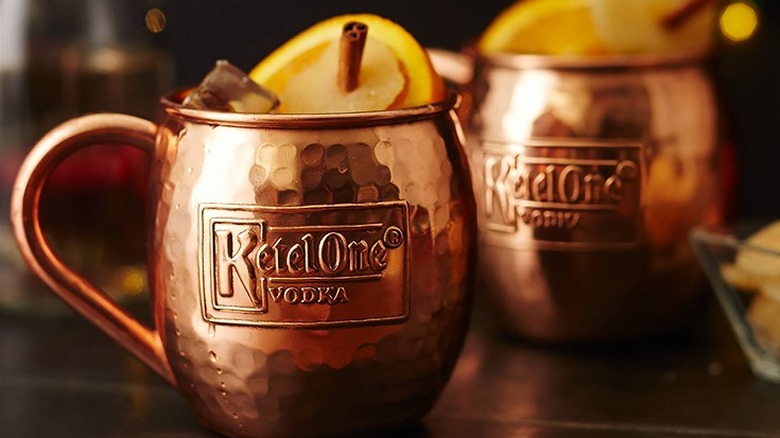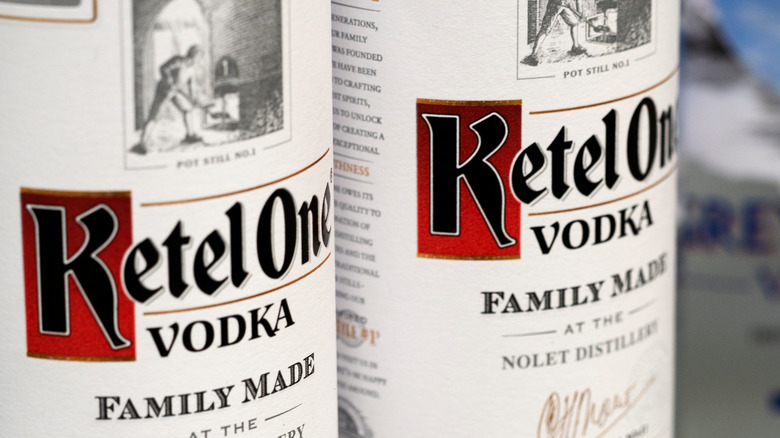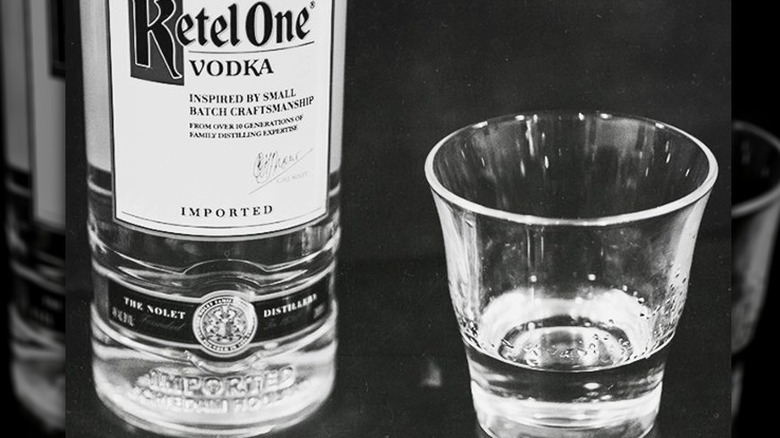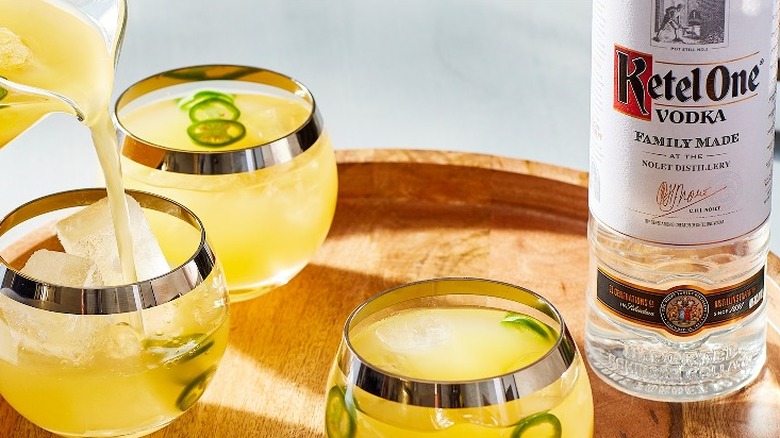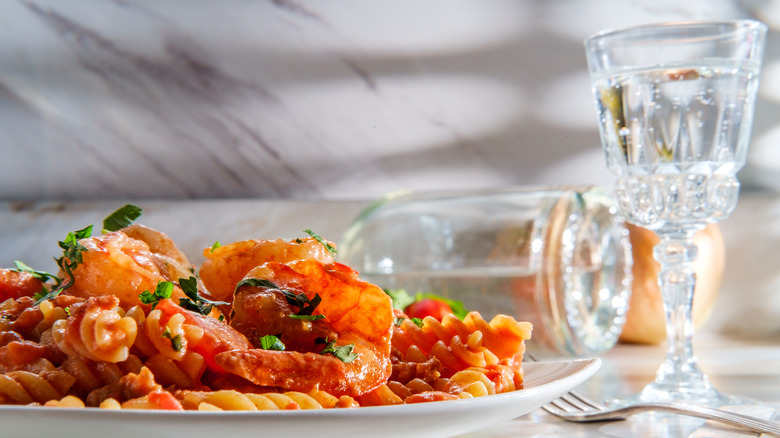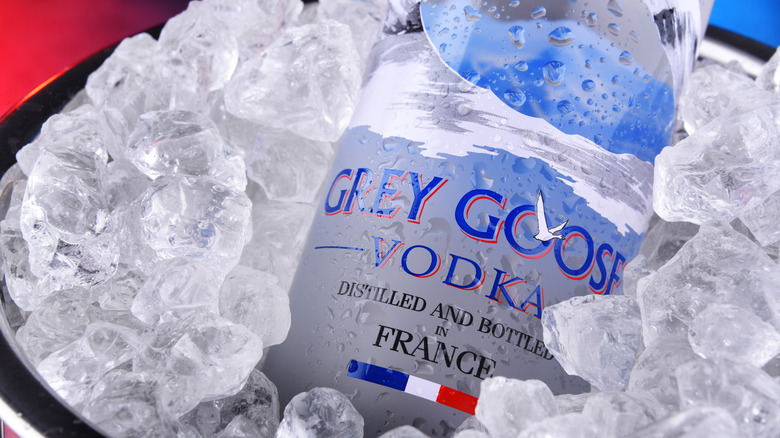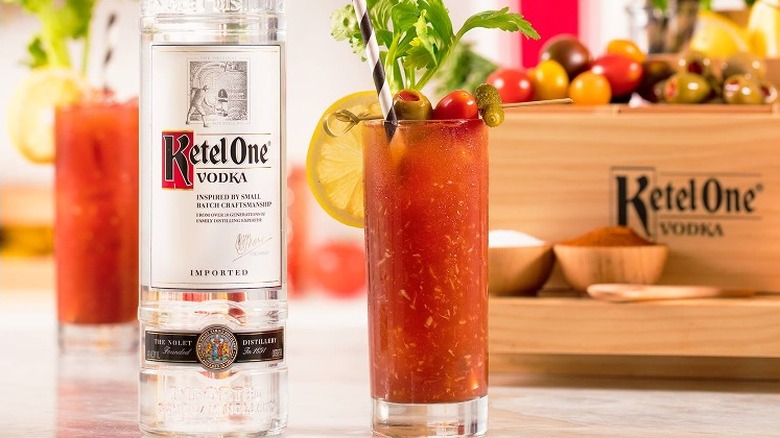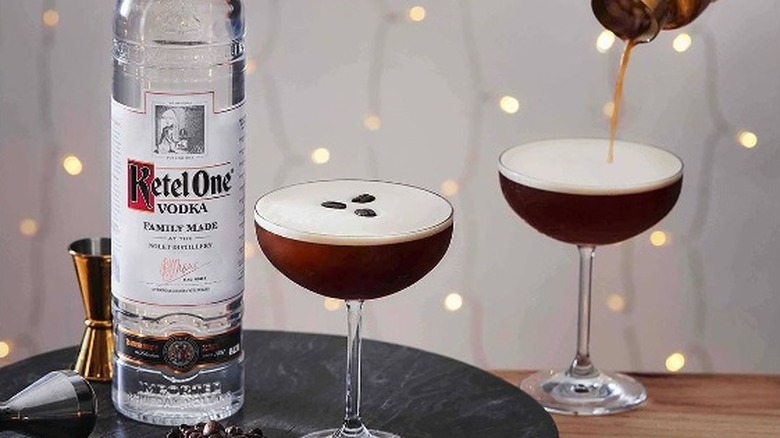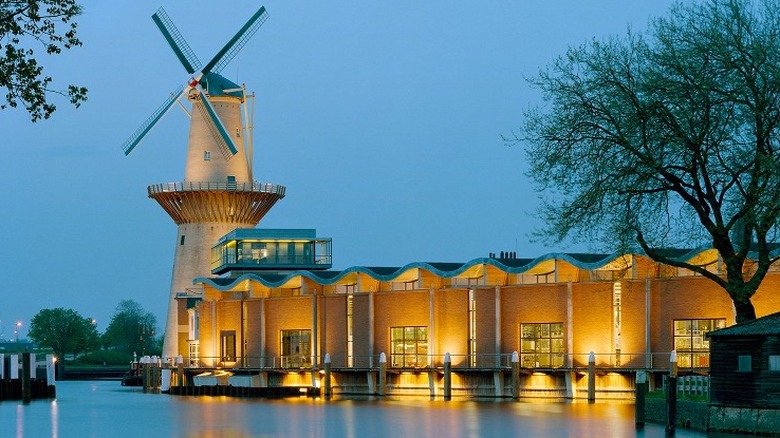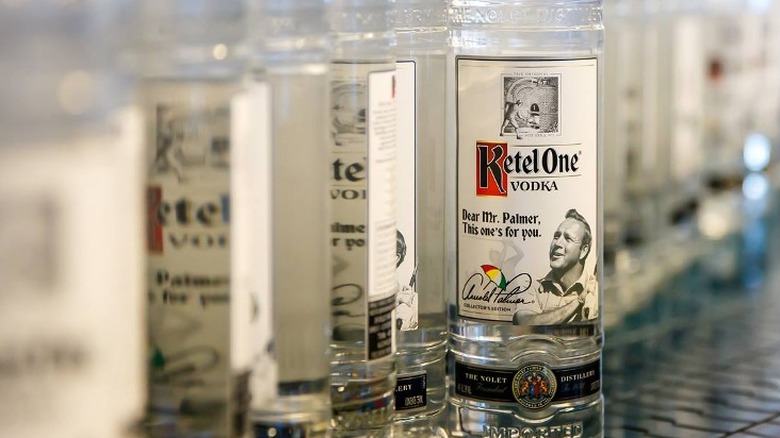Ketel One Vodka: The Ultimate Bottle Guide
Cocktail culture is alive and well in the United States. According to the Distilled Spirits Council (DISCUS), in 2022, liquor supplier sales in the U.S. were higher than beer sales for the first time in history, equating to over $37 billion.
Vodka is currently the top liquor within the spirits category, representing roughly $7 billion, despite having a relatively flat sales growth year to year as compared to mezcal and the growth of ready-to-drink cocktails.
Vodka continues to be the darling of the cocktail world. Perhaps it is because classics like the dirty martini and cosmopolitan generate nostalgic memories that consumers are yearning for in the post-Covid 19 world. Or maybe it's because vodka cocktails are simply delicious.
Whatever the reason, consumer support remains constant, with patrons requesting top-shelf options by name. Ketel One vodka is one of the most popular brands. It is consistently one of the absolute best vodka brands among bartenders and consumers.
Drinks International named Ketel One as the bartender's choice vodka in 2021. The brand has held this title for the previous nine years, and 30 percent of the bars polled by the publication used Ketel One as their house well vodka. But what makes Ketel One vodka so unique?
Ketel One is made by a family of distillers
The Nolet family has been distilling genever in Schiedam, Holland since 1691. Genever means juniper in Dutch, and it's the base for a botanical- and herb-infused liquor crafted from a base of malt wine. Though aromatic genever, or jenever, is similar in taste and texture to British gin, it is exclusively a Holland and Belgium-made product.
Today the family-run Nolet Distillery is one of the few remaining regional distilleries, having survived the French Revolution, the first world war, and the second world war. This survival is thanks to the strong family leadership in creating premium quality, authentic liquors, including Nolet's gin and Ketel One vodka.
Ketel One arrived in the American market in the early 1980s. However, this wasn't the first time the Nolet family had set its eyes on expanding into the United States. The family opened a Baltimore-based operation around the turn of the 20th Century to expand its production with a second distillery. However, the enactment of prohibition forced its closure.
In the 1980s, Ketel One re-emerged in the American liquor scene at a time when the availability of premium vodka brands was lacking in the country. Diageo purchased 50 percent ownership of the brand in 2008. Still, the Nolet family maintains ownership of the distillery and recipe, ensuring the quality found in Ketel One is always at its highest. The label on every bottle notes that the product is a family-made vodka
Ketel One enlisted the bar industry in its development
The bartending community helped create Ketel One vodka. Ketel One was created in the early 1980s when the 10th-generation head of the family, Carolus Nolet Sr., began to develop a new product specifically for the American market. He worked with bar staff across Holland to devise a product that would be delicious in a cocktail as well as sipped straight.
In an interview with Travel + Leisure, 11th-generation family member, and Ketel One master distiller Bob Nolet credits the bartending industry for influencing and inspiring the creation of the unctuous vodka. The barkeep's influence didn't stop with the flavor of the liquor. Bartenders also gave guidance on packaging, suggesting the optimal length and size of the bottle to ensure easy pourability.
The Nolets launched Ketel One in America in 1983. The reputation of this vodka quickly blossomed among the bartending community due to its premium quality, smooth texture, and appealing taste. Today the Nolets continue to work with industry influencers during new product development, and Carl Nolet Jr. even considers bartenders across the country as being part of their family.
Ketel One's production is unique
One of the main attributes of Ketel One's production that sets it apart from other vodka brands is its distillation process, which creates a silky texture. The brand's production begins with a continuous column followed by small-batch distillation in copper pot stills.
During column still distillation, a constant stream of the fermented mash is fed into one end of the still, emerging on the other end as liquor through a fast, high-volume method. As vodka's purity and clarity are critical elements, multiple columns may be connected to remove impurities.
The production method is the standard for clear spirits like vodka and rum. Conversely, pot stills are traditionally used for small-batch distillation in spirits that will age in barrels and artisanal craft distilling. Pot distillation allows for more control with an artistic touch, as producers manually control the liquor's production, enhancing the liquor's flavors and texture.
The combination is often used in the production of gin as the neutral spirit base can only be made in a column still. That base is then distilled with the botanicals in a pot still. As the Nolet family has been producing Dutch gin for generations, using multiple methods to create a well-rounded product was natural. Ketel One creator Carolus Nolet, Sr., even referred to his ancestor's recipes during the vodka's development.
A copper kettle inspired Ketel One's name
During the production of Ketel One, after the column distillation, a portion of the liquor is taken through a second distillation in ten coal-fired, manually-fed copper pot stills, creating a master blend. A part of the rich, flavorful master blend is then added to the crisp and pure column distilled vodka with water to make a final product that is ultra-clean and bright while having well-rounded viscosity and a creamy, velvety texture.
One of the ten coal-fueled pot stills the Nolets use to create the vodka inspired the brand's name. The Nolet's first and oldest copper pot still, dating back to the 1800s, is named Distilleerketel #1, or Ketel One. By Dutch law, distilleries in Holland must register their pot stills with a name and number. When the Nolets began producing Ketel One almost 50 years ago, they began using the 2,000-year-old copper pot still, or as the vessel is called in the country, a kettle.
Adding the pot-distilled liquor became the defining characteristic of the vodka. It transforms the vodka's character, adding creaminess to the mouthfeel while softening the alcoholic bite. Though this process is laborious and time-consuming, it creates the Ketel One profile.
After almost fifty years, every batch of Ketel One is still taste-tested and approved by the Nolet family to ensure its quality. Every label features a picture of Distilleerketel #1 kettle. This picture, along with the family signature on the bottle, is the Nolet seal of approval.
How does Ketel One taste?
Ketel One uses 100 percent European-grown, non-GMO soft winter wheat to produce its vodka. The grain used by the brand adds sweetness and toasty characteristics to the liquor, along with adding texture and richness. This toastiness melds with mild citrus and herbal notes of anise and tarragon with white pepper spice on the finish.
We tried the vodka a few different ways, including neat, served over ice, with a splash of water, in a martini, a Dutch mule, and a bloody Mary. We found the vodka to be incredibly versatile with each expression, enhancing the qualities of the mixers, lifting the palate when sipped on its own, and finishing with a well-rounded mouthfeel.
If you like drinking vodka, you should drink Ketel One. The liquor is bold yet balanced, with a full, round palate, slightly sweet flavor, and a velvety smooth finish. It doesn't overwhelm the cocktail. Instead, it melds into each drink with harmony. And, though the product has a wheat base, it is entirely gluten-free, as the distillation removes any gluten in the product.
Ketel One is perfect neat or in cocktails
By definition, vodka is an intentionally neutral liquor. Britannica notes that it is a colorless, odorless, flavorless alcohol, making it a neutral base in thousands of drinks. However, when Carolus Nolet, Sr., looked to introduce a new vodka specifically for the American market, he wanted to deliver a liquor that, while being clean and pure, also had character.
His desire to create a product with depth and richness would ensure drinkers could enjoy it neat, with minimal additions, and in elaborate cocktails. The innovator's liquor, with its focus on quality and immense attention to detail, is delicious in everything from an easy dirty martini or an elevated espresso martini. Its versatility has become one of the main selling points for Ketel One. It appeals to vodka drinkers who only drink top shelf and those looking for an affordable option.
Ketel One has a modest alcohol level of 40 percent. It doesn't have the alcohol burn that some higher-proof spirits contain, allowing you to enjoy it chilled and served straight up in a vodka martini with a twist, with the lemon garnish enhancing the citrus notes in the liquor. If you are feeling adventurous, use Ketel One to make traditional Italian homemade amaro, as this will infuse botanicals and herbs into the spirit for a delicious digestif.
Ketel One's use goes beyond cocktails
The use of Ketel One in cocktails is a given, with a smooth flavor profile, high quality, and relative affordability. But the use of this vodka goes beyond your favorite martini. When cooking with vodka, you can use Ketel One to create a classic penne ala vodka. The liquor's toasty notes enhance the tomatoes' sweetness and the cream's richness, heightening the aromas in the dish.
Ketel One will elevate your marinades for beef, poultry, and fish, helping tenderize the protein by breaking down the collagen without imparting an overwhelming flavor. The alcohol will soften the density of the meat. The spirit's natural acidity will enhance the additional flavors in the marinade, boosting the overall taste.
And remember to use the vodka to deglaze your pan once you have seared your steak or fish: It creates a delicious sauce. Choosing a wine to deglaze is common, but it will impart more robust fruity flavors. The subtlety and neutrality of the vodka will only elevate the meat's natural taste. And, as with cooking with any alcohol, make sure you give it time enough to burn off the raw alcohol to ensure you won't get drunk from vodka sauce.
Ketel One vs. Grey Goose
In 2022, Grey Goose overtook Ketel One for the first time as the bartender's choice vodka, according to Drinks International. Ketel One, like Grey Goose vodka, is produced from winter wheat and water, creating an 80-proof vodka.
The goal of the product was never to compete with other options; it was to rise above them. Creator Sidney Frank believed Americans would pay for a super-premium product from a place that consumers associate with luxury and gastronomy. He enlisted cellar master, Francois Thibault, to create a premium French vodka. Grey Goose has always had a higher price tag than any vodka option.
Grey Goose is single-distilled in Cognac through column distillation, followed by the addition of natural spring water from a limestone well in Gensac-la-Pallue. The final step includes light filtration followed by a taste test by Thibault with every batch.
The two vodkas have similarities due to their ingredients. Both have a light toasty flavor and slight sweetness thanks to the winter wheat base. Ketel One has a creamy mouthfeel compared to the somewhat grainier character of Grey Goose. Grey Goose has more spice, with cracked pepper and crushed stone, whereas Ketel One leads with soft herbal notes and only a hint of peppery spice.
The main difference is the overall alcohol taste: When tasting the two side by side (while cleansing the palate in between), the alcohol burn is more dominant in Grey Goose versus Ketel One.
Is Ketel One expensive?
Clear liquors, on average, are some of the least expensive spirits you can purchase. They often utilize the aforementioned continuous column distillation versus the more laborious small-batch pot still. Vodka and gin generally do not require aging, saving producers time and money. They do not need to invest in barrels to age the product or wait years to release them. Vodka can be released shortly after the production and bottling are complete.
Ketel One is unique with its dual distillation process, premium ingredients, and close attention to detail, making it a top-shelf option. Though the quality is there, the price tag is different. The average retail cost for Ketel One is $23 a bottle. Ketel One is the more affordable option when compared with other products of the same pedigree and quality, like Grey Goose, costing $30 a bottle, and similar premium competitor, Belvedere, costing $29 a bottle.
Ketel One invested in ambassadors over advertising
Securing the American bartending community's support was a top priority during the introduction of Ketel One. The brand selected San Francisco as the launch city because of its tight-knit bartending community. Carolus Nolet Sr. and his son, Carel Jr., traveled throughout the city in door-to-door sales calls to introduce Ketel One, educating barkeeps on the quality of the product.
In an interview with Booze Business, Ketel One importer David van de Velde adds that as Ketel One began taste testing, they would have a bartender or store owner try their favorite vodka first, then sip Ketel One.
Consuming any alcohol straight will numb the tongue; the first vodka desensitizes the palate, making the second spirit in the tasting, in this case, Ketel One, seem much smoother. As Ketel One is known to be one of the smoothest vodkas available, the taste test technique made the product an easy sell throughout the industry.
The product became so popular enough within the bar industry that the brand only launched a formal advertising campaign after selling one million cases. That campaign came in 2003, and even then, Ketel One leaned into its brand recognition with a minimalist print ad campaign using a historic font on a simple white background stating, "Dear Ketel One Drinker, Thank You." The company continues to carry the theme through its advertising campaigns today.
Distributor Young's Market helped popularize Ketel One
Selling alcohol in the United States requires a distributor to market and sell the product. When Ketel One launched, it utilized the services of Young's Market to be its California distributor. In the 1980s, the cocktail scene was growing, with consumers usually ordering tried and true cocktails with little innovation or imagination. Distributor Young's market changed the conversation with the introduction of Ketel One.
The distributor, having found success in providing wine lists to guests in restaurants, worked with the producer to create specialty cocktails and martins. Young's then printed cocktail menus with these drinks featuring Ketel One and actively gave the menus to restaurants and bars for their patrons.
Though it is familiar to have cocktail menus today, they were a novelty at the time. The menus caught on, with diners venturing beyond the norm to enjoy one of the new Ketel One cocktails. The brand's recent "Born to Cocktail" campaign leans into the classic drinks that built the brand. It highlights how simple yet expertly prepared Ketel One cocktails define a well-lived life.
Ketel One's windmill is more than just aesthetically appealing
Some of the most iconic images of Holland include tulips and windmills. The country has over 1,000 windmills, each serving various functions, including to mill grain or providing drainage.
In 1794 Jacobus Nolet built a massive windmill nicknamed "the whale" in Schiedam to process grain for the town. When Carolus began the Ketel One distillery, he wanted to incorporate an environmentally friendly energy source. Respecting the traditions of the town, he decided to do this through a windmill named Noletmolen.
The windmill is a 141-foot-tall building that looks like the traditional windmills that dotted the town throughout its history. But the structure does much more than look nice. Noletmolen houses a wind power station producing enough energy to run the Ketel One distillery. The windmill also is home to the distillery reception area, a bar, and a movie theater.
The company's focus on sustainability continues beyond the windmill. In 2007 the company built an underground tunnel connecting the distillery to the logistics building, cutting traffic, and minimizing emissions around the plant.
The company's American headquarters utilize 360 solar panels that supply 75 percent of its necessary energy, offsetting 18,000 gallons of gas. The company plans to reduce waste and significantly curb energy use in 2030, specifically reducing its use of natural gas.
Arnold Palmer loved Ketel One
After finishing a round, golf legend, Arnold Palmer was known for enjoying his refreshing signature drink of half lemonade and half iced tea. But, the drink named after "the King of golf" wasn't the only libation he enjoyed after hitting the links. Palmer also loved vodka on the rocks with a twist, as long as it was Ketel One.
When he turned 70, his wife reached out to the Nolets and shared her husband's affinity for the vodka. The company was honored to learn of his enjoyment of its liquor, and it designed a commemorative bottle to celebrate his birthday, beginning a friendship that would endure until the end of Palmer's life at 87.
The company became a significant supporter of the Arnold and Winnie Palmer Foundation as a thank-you for the golfer's support of the brand. The friendship with the family continues with the company honoring the golfer's legacy with special limited edition releases coinciding with his birthday.
